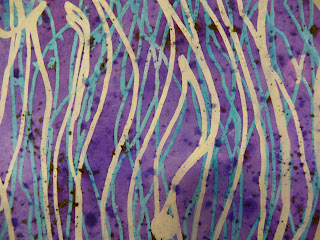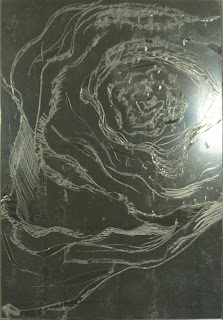Bleach can be applied to a variety of surfaces; it works by taking out the colour of the surface you are working on. It can be applied using a paintbrush, stick, nib pen or diffuser. In order to gain more subtle colours the bleach can be diluted using water, to stop the bleach from bleeding PVA glue can be added. Bleach works well on, coloured tissue papers, brown paper, watercolour and food colouring.
*Always be careful when working with bleach, wear gloves, do not ingest, seek help immediately if you get bleach in your eye.





































